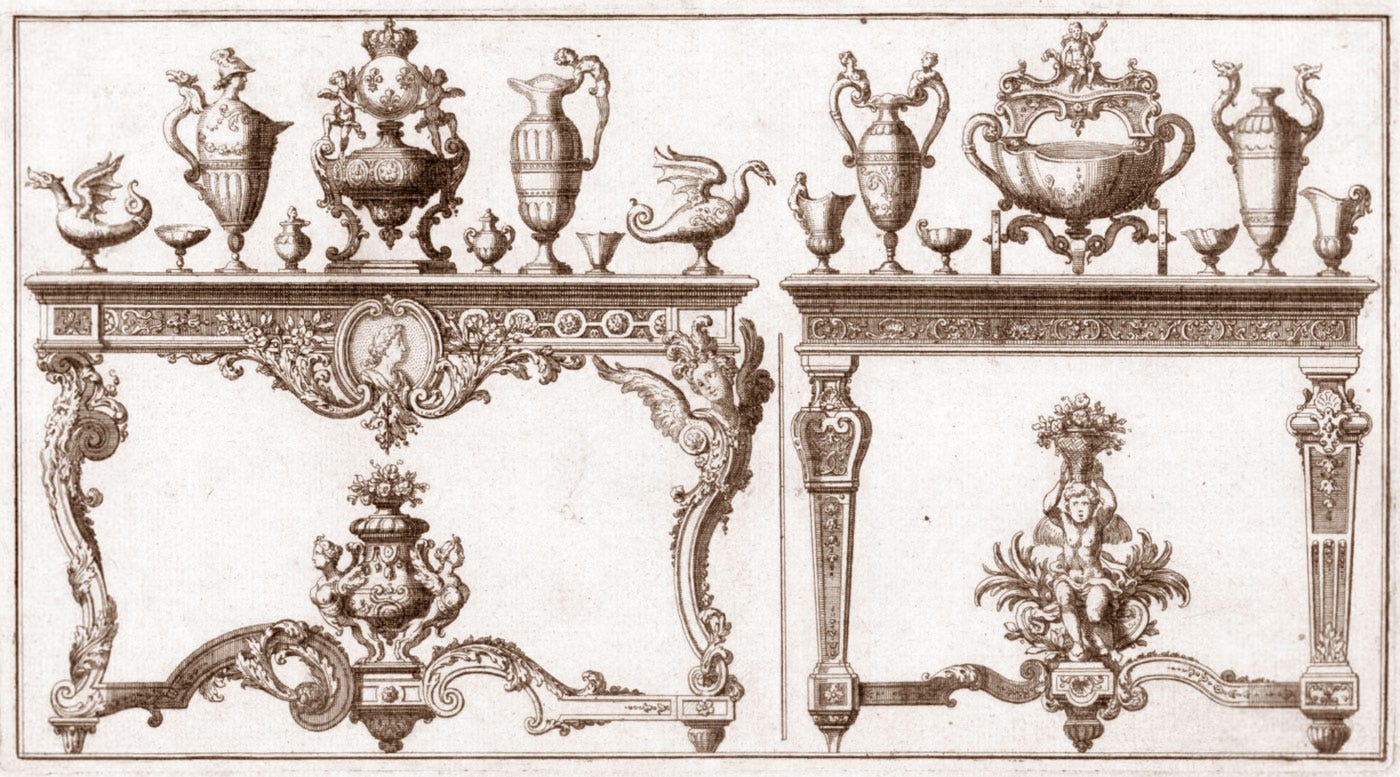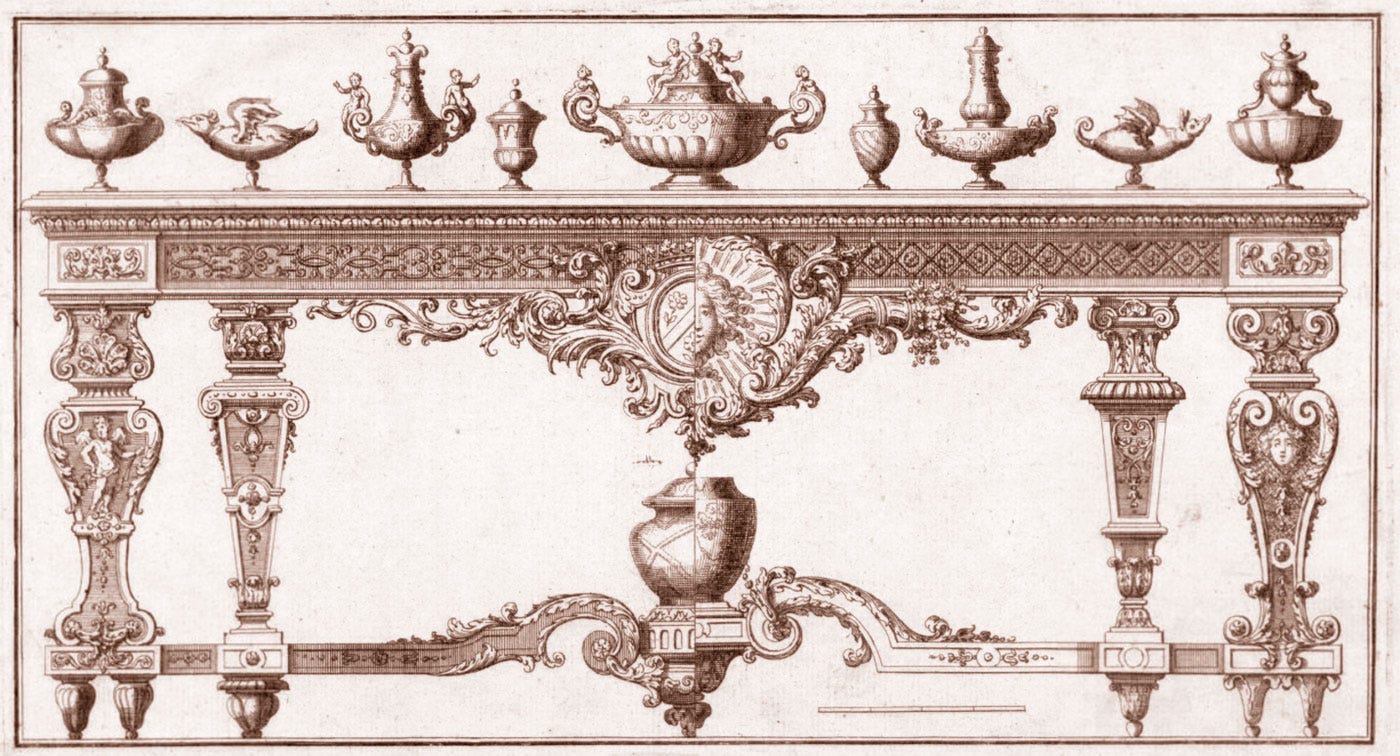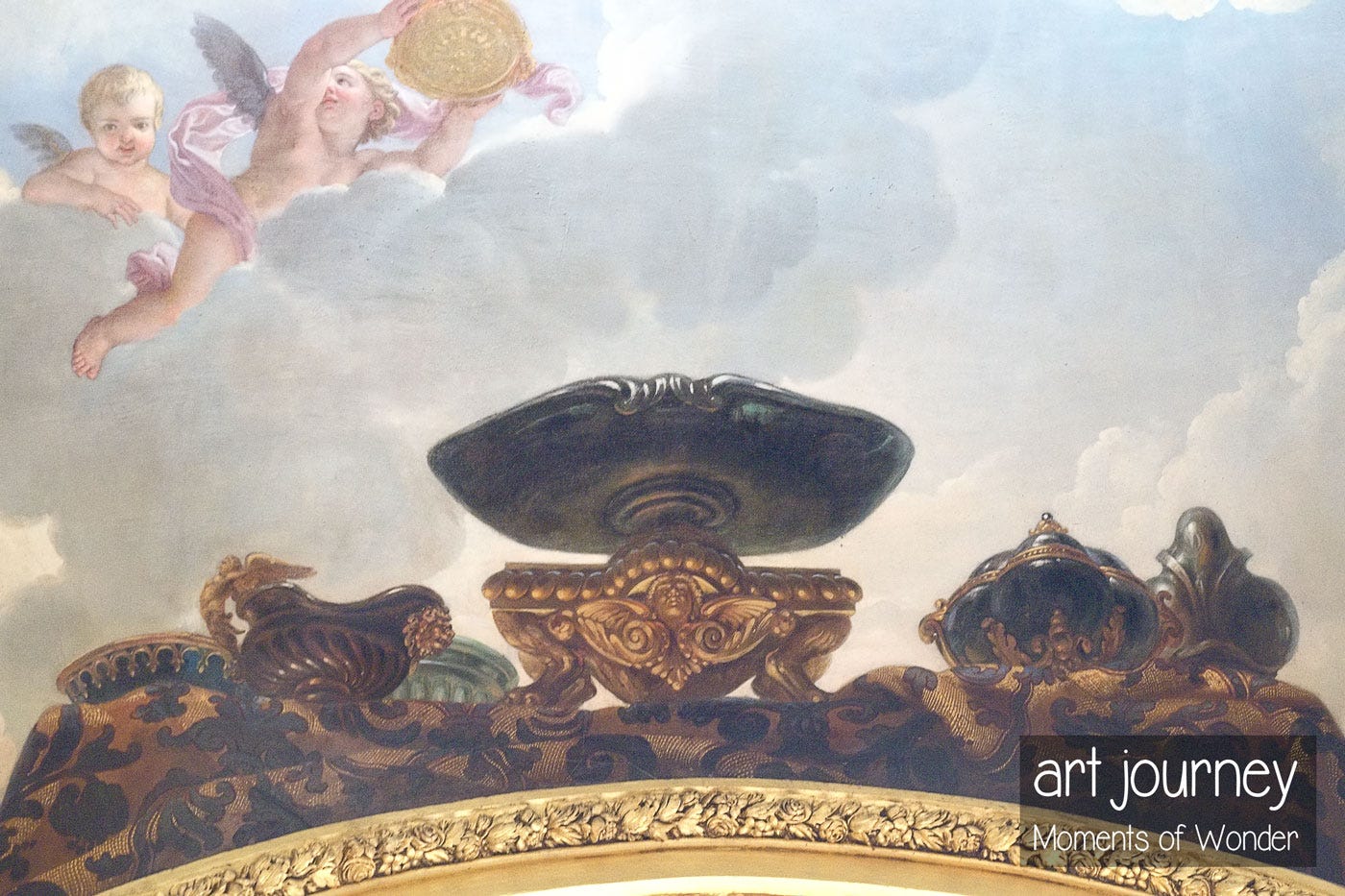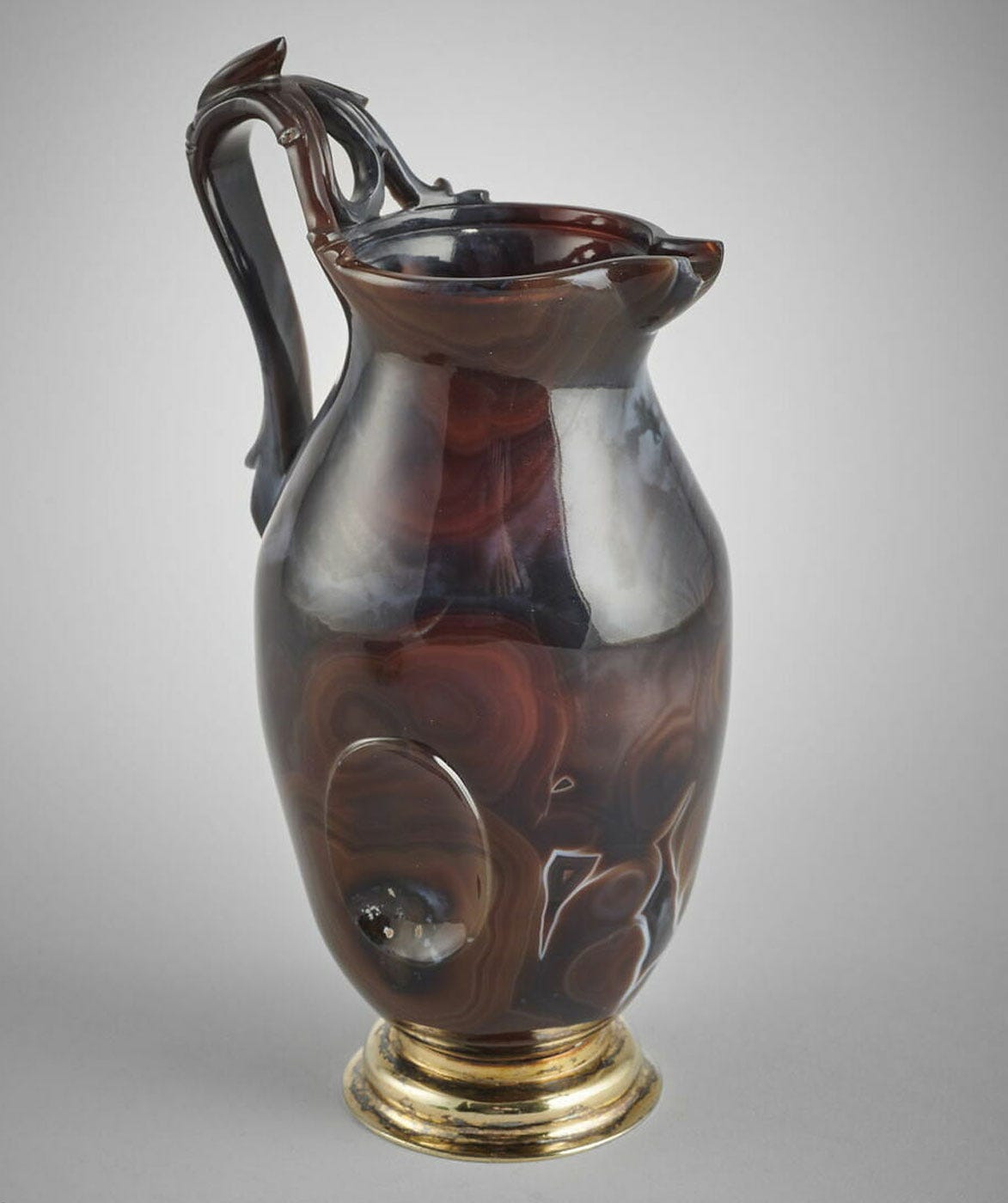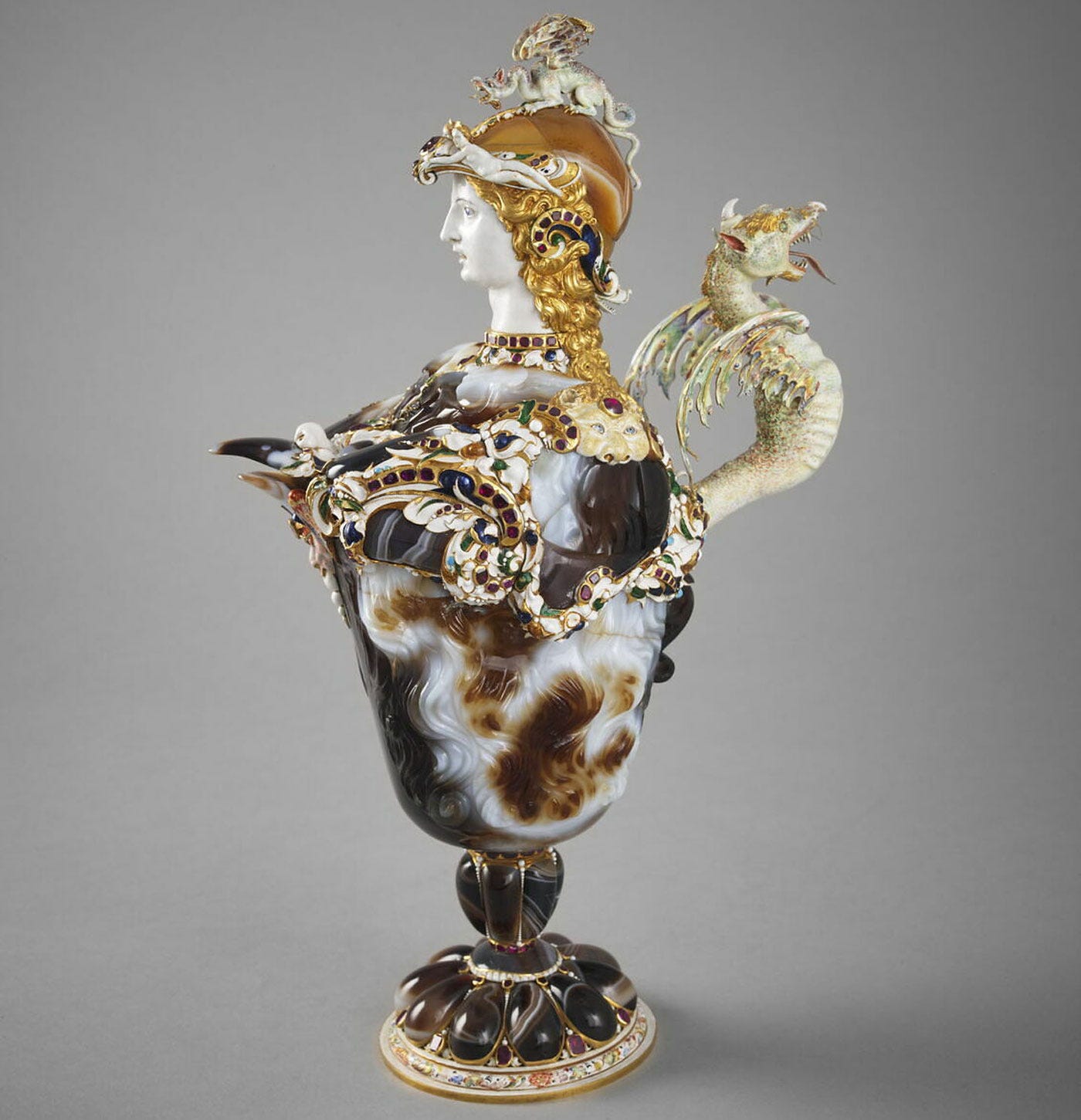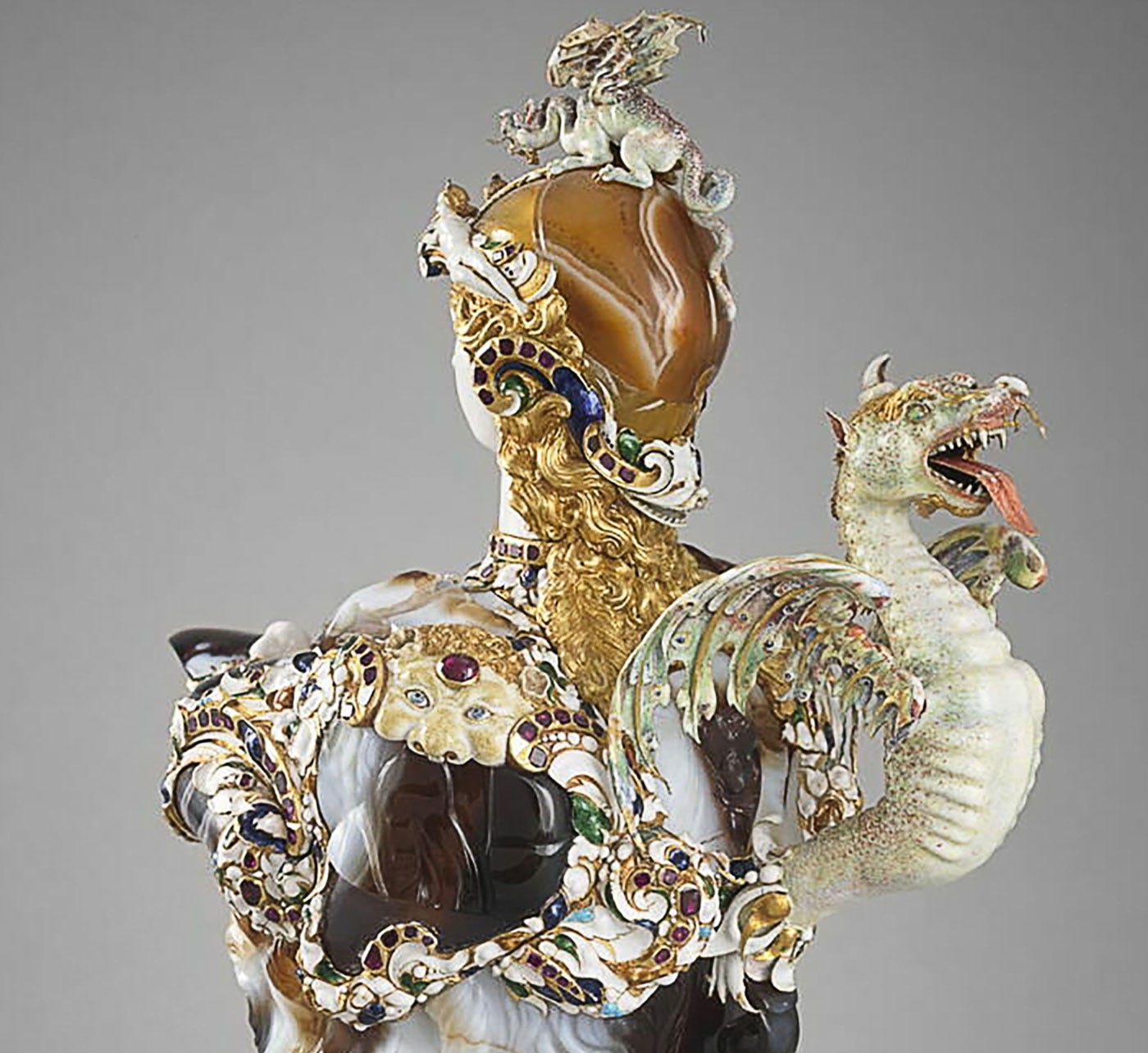In previous stories, we started an ideal list of the Louvre's top 100 masterpieces. And with 'Fake Diamonds, Real Crown,' we wondered how the Royal Crown of France could be set with fake stones while being very much real.
That is the trick with the next Top 100 Treasure of the Louvre, the Gemstone Collection of Louis XIV. The Versailles-like room, the Apollo Gallery, already dazzles the visitor, and the promised Crown gets the phones out in a rush to the other famous thing, with no time to realize the shiny stuff in the crown is nothing but glass.
Yet, dear reader, hiding in plain sight was the promise of this story. So, here it is, Louis XIV's Gemstone Collection.
Louis XIV's Gemstone Collection
You know him as the man behind Versailles, but Louis XIV was also one of history's most important gemstone collectors.
Gems, as diamonds: Louis XIV collected diamonds, including the biggest blue diamond ever discovered—also known as the Hope Diamond—and had no hesitation in being adorned with diamonds from head to toe.
Below is Louis XIV's jewel box—on the Top 100 shortlist.
But why stop at a box full of gems when you can have a room full of gems?
Versailles, a palace with solid silver furniture and a room full of gemstones
Dear reader, we have already discovered that Louis XIV had 20 tons of solid silver furniture made for Versailles. While this treasure was visible to anyone entering the castle—as long as a man wore a hat and a sword, he could enter the King's State Apartments—Louis had a private room for his gemstones.
As the engravings show, the precious gemstone vases were displayed on tables, between painting masterpieces, and underneath a lapis-lazuli ceiling. By Louis XIV's death, the Royal Collection contained 950 precious gemstones and 21,000 coins.
Looking above your head, you can still see in Versailles today traces of this collection:
Note the easily recognizable jasper cup on Versailles’ Abondance room ceiling, today in the Louvre:
From a private Royal collection in Versailles to the Louvre museum
Consider the financial value of 950 precious stone vases. Some of the gems date from the Roman era, and other stones came from all corners of the world, such as Afghanistan or Colombia. Imagine the costs in the 1600s.
The collection's story is tortuous. Between sales, the thefts during the Revolution, and gems used by the Revolution as currency to pay the bills, there are around 500 remaining today on display in the Apollo Gallery of the Louvre.
It was a Royal palace, and the Crown owned the gems. In 1793, the Louvre became one of the first modern museums and one of the largest ever.
The Louvre's collection of precious gems is one of the most important ever assembled. It is not reserved for special guests like a king or emperor; anyone can see it with a Louvre museum ticket.
That is why it is a treasure hiding in plain sight.
Most visitors race from the Venus of Milo to the Mona Lisa, take a photo of the Royal Crown without realizing they are taking pictures of glass, thinking it's diamonds, and pay no attention to an astonishing concentration of gemstones around them.
We do not need to rush here, so here's a selection of the Louvre's rarest gemstones. If they were good enough to be Louis XIV's most treasured possession, they deserved that we pay an instant to admire them.
Let's be vain for one minute and start with the two most expensive objects in the collection.
Louis XIV's lapis-lazuli vessel
A boat-shaped vessel carved from lapis-lazuli, set in chiseled gold and enameled, valued at 200,000 pounds.
Dear reader, first contemplate the difficulty in the 1600s of finding a massive piece of lapis-lazuli in the mountains of Afghanistan, then, as today, a faraway and dangerous place. Consider the work needed to chisel the gold and enamel it.
Enamel is powdered, colored glass that becomes liquid when heated in an oven. It is usually done on flat surfaces, with little walls separating each color, as the colors will mix once it is fluid.
Then, look again at the detail of the face above and the other wonders in this story. Try to work out the difficulty of enameling carved figures without the colors running or mixing.
Once you contemplate that, you realize that even Louis XIV or Kings generally do not use these masterpieces as mere pots for sauce or milk. If you were lucky enough to own such marvels, the idea would not even appear. They have always been collectibles, objects of wonder, far too fragile and precious to be used.
Sardonyx, rock crystal, and emerald mirror
Worth 150,000 pounds, second only in value to the lapis-lazuli vessel, this architecture-like mirror shows the benefits of slowing down. The mirror is made of rock crystal. Crystal is a word that confuses a lot of people, so here is a quick explainer:
Crystal is glass. It is man-made; sand is cooked with added lead to become high-quality glass. It may be high-quality glass, but whatever clever marketing people say, 'crystal' is glass, no more, no less.
Rock crystal is quartz, a gemstone Mother Nature created millions of years ago. Comparing the two is like comparing grape juice with Château Neuf du Pape wine. They may look the same at first glance, but they are not on the same level.
Now, consider the size and quality of the emerald and the carved garnet figures, and it should start to make sense why this is at the top of the list.
The collection has hundreds of gemstones; we cannot describe them all. To conclude, two favorites of mine are the 'ugly duckling' and the dragon.
Roman sardonyx ewer
Here is the 'ugly duckling'. It is smallish; there is no shiny gold or enamel. I would be surprised if, out of 30,000 people who walk past it, one stops and pays attention.
Yet. To begin with, it is valued at a mere 100,000 pounds, making it third in terms of value in the collection. There is a proviso; there is a slight crack within the stone. The inventory states that without it, it would be worth 300,000, meaning it would be the most valuable gemstone object in Louis XIV's collection.
Why? First, it is Roman, about 2,000 years old, so consider the odds of its survival. Second, it is a single piece of quartz (sardonyx is from the quartz family) carved by hand from one piece of precious stone.
It ranks so highly because of how thin the stone is. It is a miracle of stone cutting, unrivalled in quality since. Even slightly damaged, this little ugly duckling has the potential to become a swan for whoever pays attention.
Roman sardonyx vase set in gold by Pierre Delabarre
Here's our dragon. First, the gemstone. It is Roman, hence scarce, but the bottom part of a larger but broken antique. So, Pierre Delabarre, part of a family of eminent jewelers living in the Louvre, was tasked with resetting it.
Yes, several masterpieces displayed in the Louvre were made in the Louvre—that will be a future story. This is how, in the 1630s, Delabarre created a masterpiece and signed it. It is signed, which is one of the reasons why it is a wonder.
As visible above, Delabarre cleverly transformed the broken fragments into the complete vase, set in gold and enameled. In the Revolution's inventory, it was valued at a paltry 25,000 pounds. Maybe the experts were weary after valuing hundreds of precious objects!
Now, look at the dragon below:
Dear reader, if discovering Louis XIV's gemstone collection in the Louvre was not enough to awe you, you can not see it in a photo, but the tongue moves. It is enameled gold and moves for no reason but to bring awe to the viewer.
There's the Moment of Wonder.







